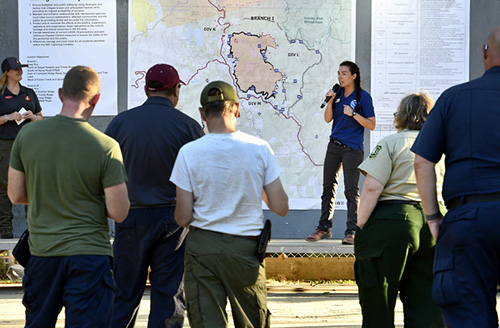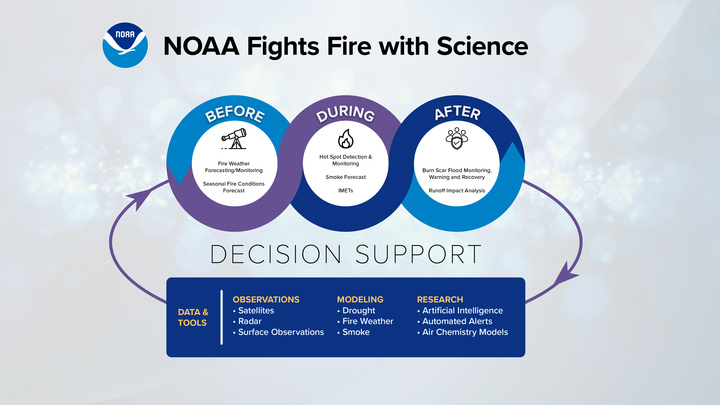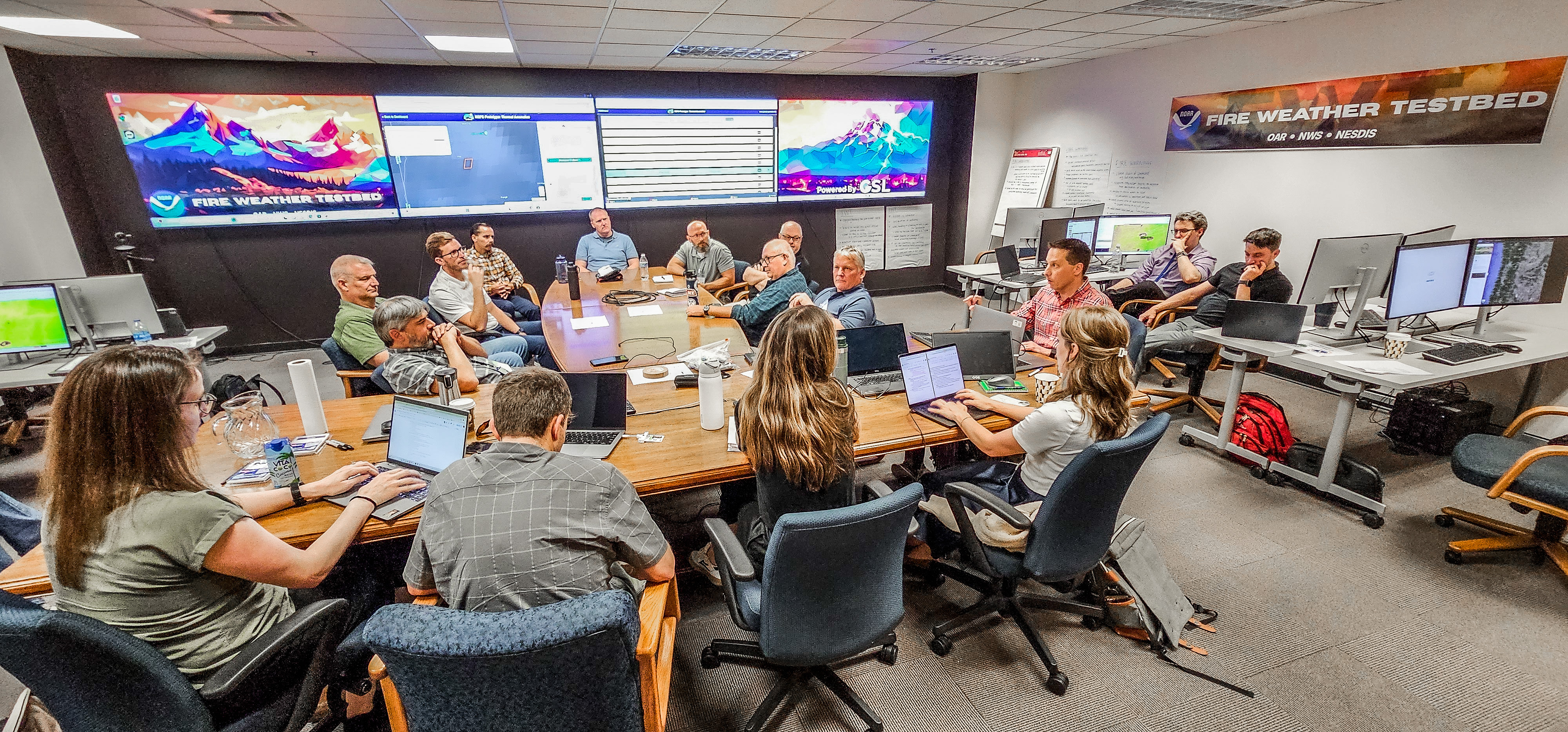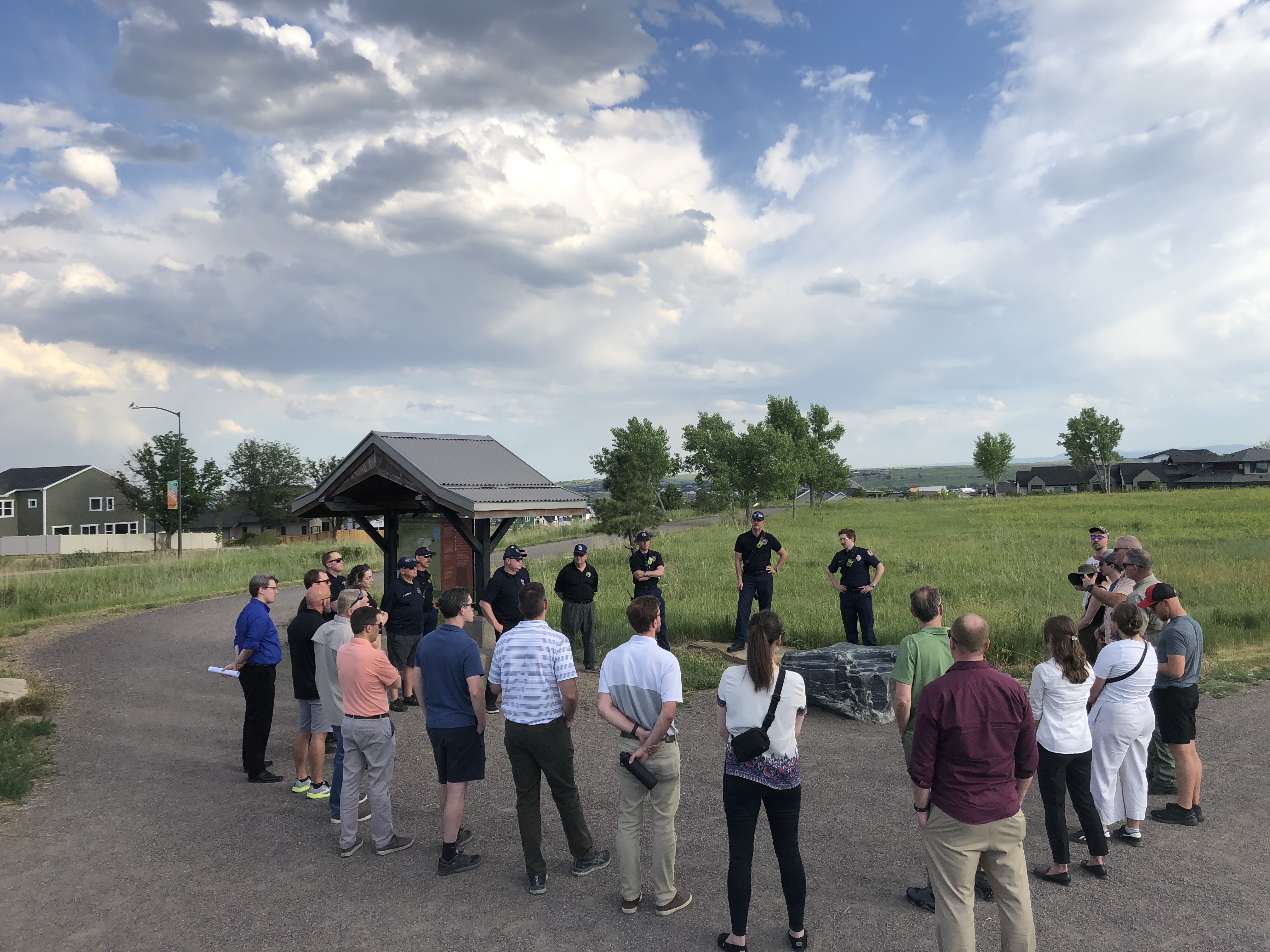Fire Weather Testbed
What is the NOAA Fire Weather Testbed?
There is a growing need across Federal, State, Local, and Tribal governments and agencies for new and improved models, observations, technologies, and tools to support decisions involving wildland fire. To completely address challenges involving the total fire environment, an operations-to-research-to-operations testbed entirely focused on wildland fire from both physical and social science aspects is essential.
What are the objectives for the NOAA Fire Weather Testbed?
NOAA has five main objectives for the Fire Weather Testbed.
- Transition advanced technologies and new applications to operational platforms as quickly as possible.
- Bring the fire weather community together to leverage broad knowledge and expertise to understand information needs and to co-create technology, resulting in quicker technological advances.
- Leverage the expertise within NOAA to accelerate and target the delivery of technologies to operational platforms and applications.
- Ensure continuous operations-to-research connections of the fire environment developed through ongoing, iterative user needs-driven assessments
- Reach beyond NOAA and the Federal government to build partnerships facilitating collaborations across Tribes, state agencies, municipalities, academia, non-governmental organizations, and communities engaged in wildland fire management.
The NOAA Fire Weather Testbed aims to accelerate the development and delivery of products, technologies, and communication strategies to users. This includes evaluating capabilities that:
- Support National Weather Service products such as Red Flag Warnings to provide situational awareness and prevent ignitions
- Provide services to safely mitigate dangerous wildland fires
- Aid implementation of prescribed fire and wildfire management to achieve resource benefits, minimize negative impacts on life and property, and reduce future fire hazard
- Help communities prepare for hazards before, during, and after wildland fire.

By supporting all aspects of the fire cycle-- before ignitions, during active fire, and throughout the postfire recovery process--the Fire Weather Testbed will facilitate operational-needs-driven research advancements back to operations. These technological and communication improvements will enhance community resilience and build a fire-ready nation prepared to live with fire.
The NOAA Fire Weather Testbed is a collaborative effort between three NOAA line offices: Global Systems Laboratory (GSL), the National Weather Service (NWS), and the National Environmental Satellite, Data, and Information Service (NESDIS).
 %
%
Firefighters stand along a fireline monitoring a burnout operation intended to re-introduce low intensity fire into a fire-adapted mixed conifer forest in the Sequoia National Park (September 2021).
Supporting Decision Making Throughout the Fire Cycle
BEFORE FIRE
Preparation and readiness are keys to success in natural hazard management. Before fires ignite, we need better forecasts and decision-support tools to identify potentially high-impact fire weather environments. This will help decision-makers mobilize and pre-deploy resources to mitigate the potential for catastrophic wildfires, especially those potentially reaching the wildland-urban interface. Before fire, we need:
- Improved forecasts for the potential for dry lighting outbreaks
- Better long-range to sub-seasonal forecasts to assist in the implementation of prescribed fire or “good fire” on our landscapes, help mitigate the potential for future devastating fires, and to restore ecosystem function
- Probabilistic forecasts of the long-range weather and smoke transport to ensure safe implementation and communication during prescribed fires.
DURING FIRE
Once a fire ignites, observing current and forecasting future environmental conditions driving fire behavior is necessary to safely and effectively achieve fire management objectives. During fire, we need:
- Better high-resolution forecasts in rugged terrain to help Incident Meteorologists provide critically important weather information to fire managers
- Coupled fire-atmosphere models to better predict rapid fire spread
- Advanced predictive tools for complex and dynamic problems, like pyrocumulus development Skillful forecasts of local and long-range smoke transport to provide valuable information for protecting public health and safety.

AFTER FIRE
Once the flames are extinguished, the challenges of fire do not end. Postfire hazards range from falling trees to soil erosion. Transport of newly formed and mobilized environmental pollutants in the air and water can persist for years after fire. Following fire, we need:
- Skillful forecasts of short-duration, high-intensity rainfall that triggers post-fire hazards such as flash flooding and debris flows that contribute to erosion, sediment, and pollutant transport, impacting infrastructure, public safety, and ecosystem health
- Improved understanding and monitoring of how landscapes recover in the years following fire to inform adaptive management of natural and urban settings to enhance resiliency.

An end-of-day round table discussion following a 2024 evaluation exercise in the Fire Weather Testbed including participants composed of state fire managers and National Weather Service meteorologists as well as product developers, subject matter experts, and Testbed evaluators.
Recent Fire Weather Testbed Activities, Evaluations, and Publications
- Fire Weather Testbed Evaluation Report: An End-to-End Evaluation of NOAA's Emerging Wildland Fire Detection and Warning Capabilities Available here
- Fire Weather Testbed Evaluation Highlight: “NOAA Fire Weather Testbed Launches First In-Person Evaluation” Available here
- Fire Weather Testbed Evaluation Report: “Fire Weather Testbed Evaluation #001: The Warn-on-Forecast System for Smoke” Available here
Field-Based Activities
Fire Weather Testbed evaluations and assessments include field-based activities to develop and strengthen community connections and knowledge-sharing. The 2024 evaluation group met with local firefighters who responded to the 2021 Marshall Fire at one of the wildland-urban interface locations where the fire transitioned from a wildland fire to an urban conflagration. Image from Wells et al. (2025).

Fire Weather Testbed Objectives
The NOAA Fire Weather Testbed is a collaborative effort between NOAA's GSL, National Weather Service (NWS), and National Environmental Satellite, Data, and Information Service (NESDIS).
Our Mission
Lead research and directed development through the transition of environmental data, models, products, tools, and services to support commerce, protect life and property, and promote a scientifically literate public.
Research Areas
Organizational Excellence, Earth System Prediction, Advanced Technologies, and Decision Support are the foundation to achieving the GSL Grand Challenge: Deliver actionable global storm-scale prediction and environmental information through advanced technologies to serve society.
Global Systems Laboratory

